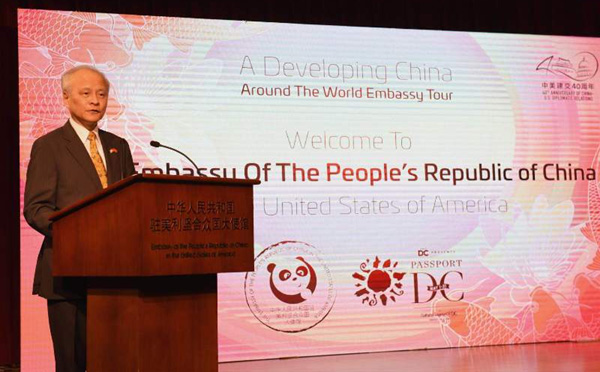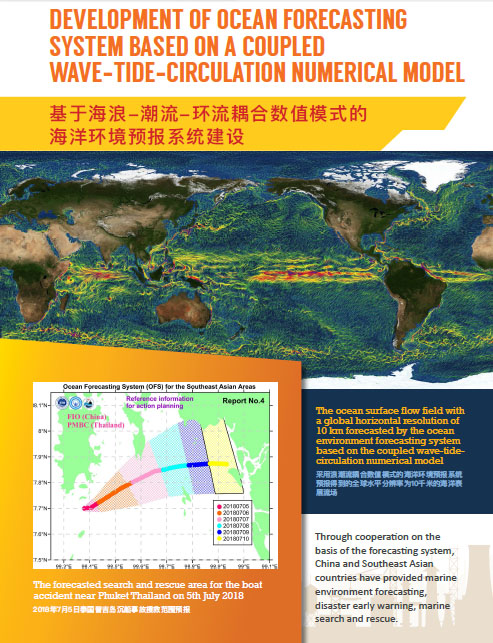Influenced by global climate change in recent years, extreme marine disasters such as typhoons, billows, storm waves and coastal erosion happen more frequently, which seriously endanger people's life and their properties and cause huge financial losses for coastal countries. For instance, the Typhoon Haiyan attacked the Philippines and Vietnam on November 8-11, 2013, destroying houses of 110,000 families and claiming the lives of more than 4,600 people. The development of a high precision ocean forecasting system and provision of an accurate marine prediction is the technological essential for disaster mitigation and prevention.
The development of the marine numerical mode has long been dominated by developed European and American countries. Although remarkable progress has been made in the development of international marine numerical modes, a great common deviation exists for almost all marine numerical modes. The simulated and predicated sea surface temperature is high, while the sub-surface temperature is lower. For the above common problems, FIO has created the wave-induced non-breaking turbulence, and developed the world's first wave-tide-circulating current coupling numerical mode. This has significantly improved the marine numerical mode, which has long been hampered by the higher simulated sea surface temperature and thinner mixed layer. This theory has been used by many research teams in USA, Germany, France, UK, Sweden, Hungary and Australia among other countries, and has successfully improved the simulation and prediction accuracy of their marine numerical modes.
Therefore, FIO has developed the "Ocean Forecasting System for the 21st Century Maritime Silk Road” after years of arduous efforts. According to the inspection results of IVTT, the international standard method, the accuracy of this prediction system has reached the internationally leading level. Upon the invitation of IOC/WESTPAC of United Nations Educational, Scientific and Cultural Organization, this predication system has been officially released to the whole world on December 10, 2018. Global users may inquire about the predication results of marine environment for the following 5 days such as temperature, salinity, ocean currents, sea surface height, wave height and cycle by visiting http://221.215.61.118:2018/ofs/ via the PC client or the mobile APP "Global Ocean on Desk" at any place.
Sea water currents not only controls the drifting path of ocean contaminants, drifting wastes on the sea and microplastic, but also influences the search and rescue on the ocean. On July 5, 2018, after the shipwreck accident in Phuket, Thailand, at the request of the Thai government and approved by the Ministry of Natural Resources, the First Institute of Oceanography worked closely with Thai authorities to provide a search and rescue region forecast. Its accuracy has been verified by the subsequent salvage results and produced positive responses in the international community. The too hot sea water will result in the reef bleaching, and this prediction system has been directly applied to the coral reef ecological system in Southeast Asia. The inclusion of this system into the technology show of the Embassy of China in the United States will further show China's inventive achievements in the field of marine environment prediction and improve China's international clout in the fields of marine environment prediction theory and technology.
Source: Embassy of China in the United States, FIO





